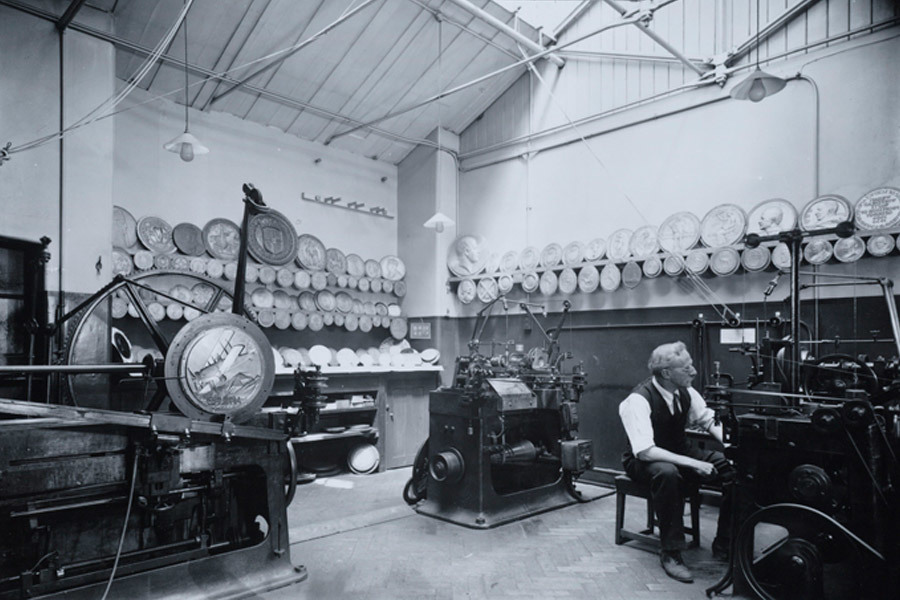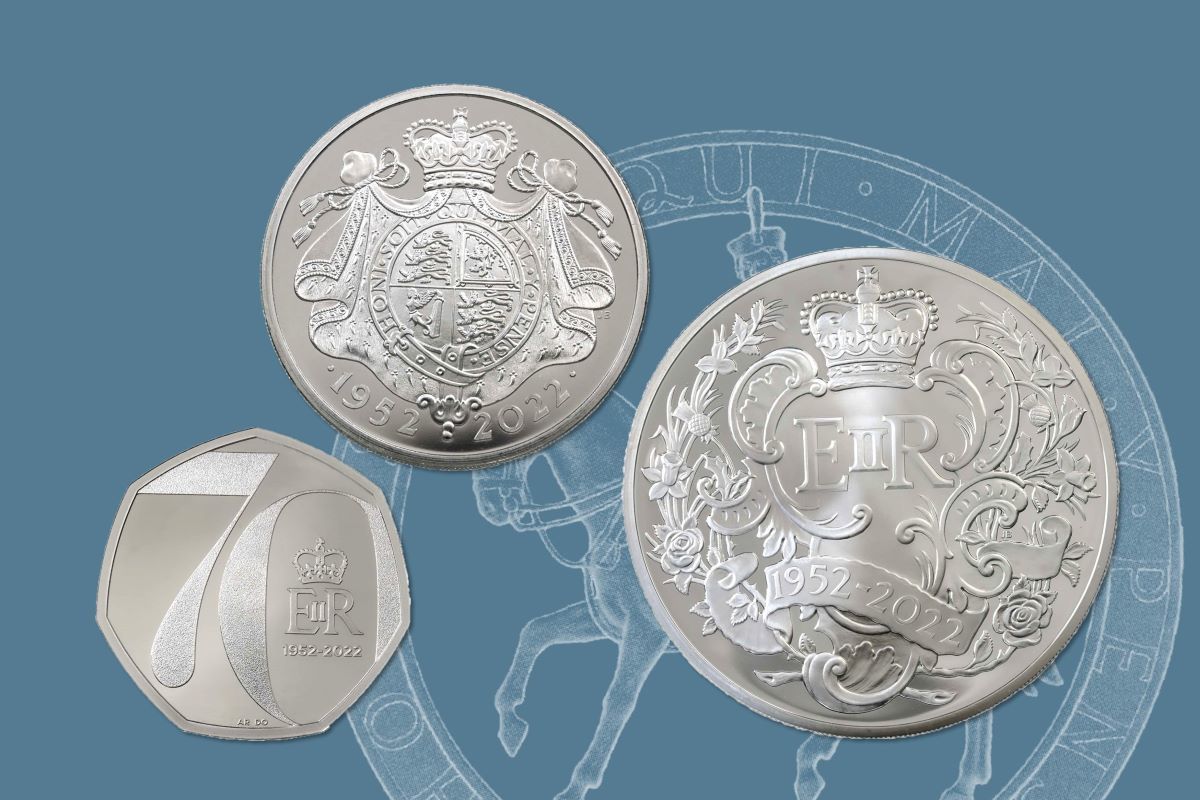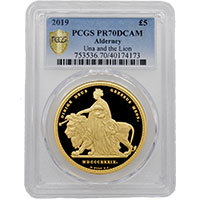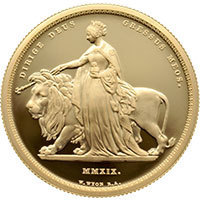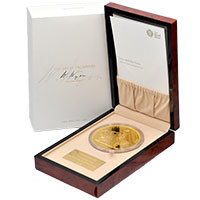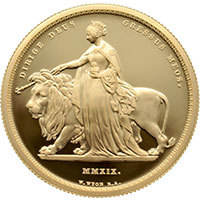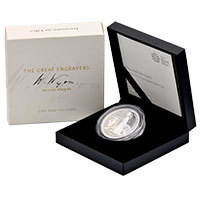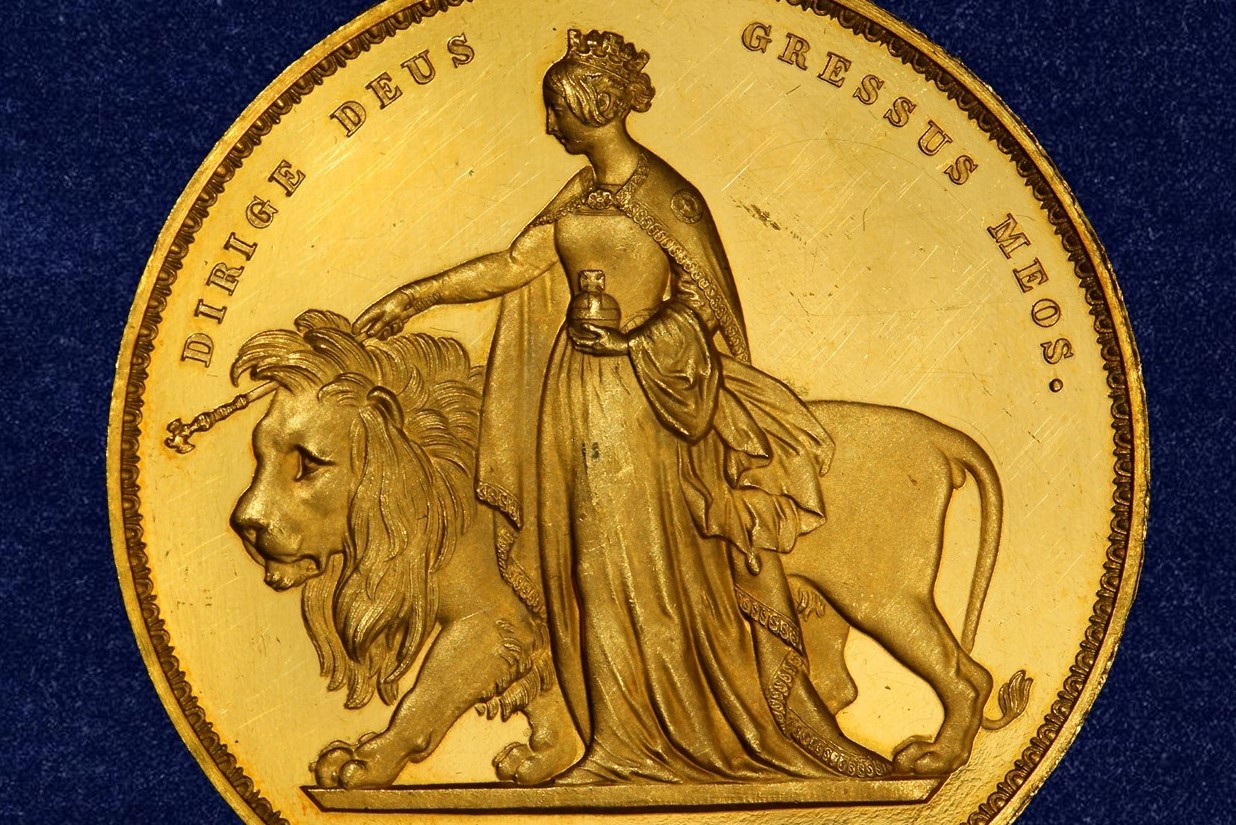
William Wyon's 'Una and the Lion' five pound piece, first struck in 1839, has long been regarded as among the most beautiful coins in the world. It is also a highly sought after collectors piece, achieving impressive sale prices at auction. But what makes this design so desirable? And why did the Royal Mint choose to reissue it as part of their Great Engravers series in 2019? Understanding the literature, history, politics, symbolism and craftsmanship behind this widely loved pattern might help us answer those questions.
A Celebrated Engraver
The master craftsman behind 'Una and the Lion' is William Wyon. From a family of engravers and medallists, Wyon became Chief Engraver at the Royal Mint in 1828 after 12 years working as Second Engraver. His eldest son, Leonard Charles Wyon would also become a notable coin designer.
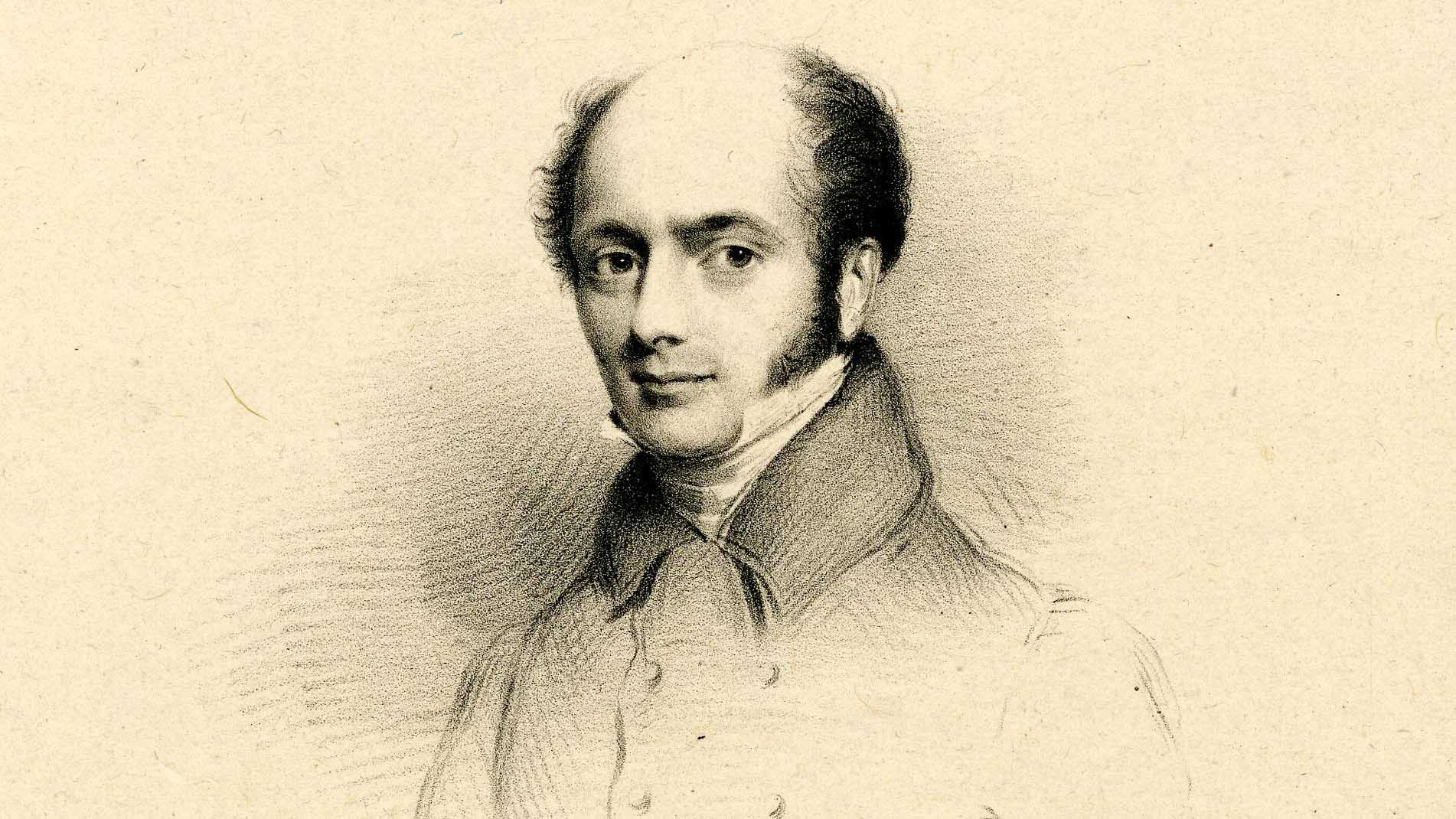
An 1835 portrait of William Wyon, after Eden Upton Eddis from the collection of the British Museum.
A proponent of the neoclassical style in vogue at the time, Wyon is known for his technical skill, accurate portraits and impressive output. He was the engraver behind at least 43 different coins issued in England, as well as many more for British colonies including Jersey, Malta, Hong Kong, British India and Ceylon.
Queen Victoria was Wyon's most famous subject. His coins and medals chart her rise from 13 year old princess to crowned head of state. His 'Young Head' was in circulation from 1838 and would remain in use until Victoria was a grandmother and the fresh-faced effigy was no longer accurate. An earlier portrait of Wyon's, made for a medal, became the design used on postage stamps for more than 60 years, starting with the Penny Black in 1840.
Alongside his famed 'Three Graces' pattern and his royal profiles, Wyon's most famous design is his 1839 'Una and the Lion' engraving. But what makes this usual design so memorable?
Gold Five Pound Coin
In 1839 Wyon was at the height of his powers. The year before he had been elected an associate of the Royal Academy, the first medallist to be so honoured. His portrait of the new Queen was circulating on British coinage from Sovereigns to Half Farthings. Wyon might also have considered himself the victor in the longstanding competition with his contemporary, Benedetto Pistrucci.
It was at this time he was asked to produce engravings for a gold Five Pound coin, completing the set designed to celebrate Queen Victoria's coronation. Victoria succeeded to the throne at the age of 18 on the death of her uncle, William IV. She was crowned just over a year later in June 1838.
Gold Five Pound coins had been produced under Victoria's predecessors, George III and George IV. These proof coins were legal tender but not intended for circulation. Wyon's coin for the new Queen was no different in this respect. Two more gold Five Pound coins would be minted during Victoria's reign but none featured Wyon's 1839 literary design.
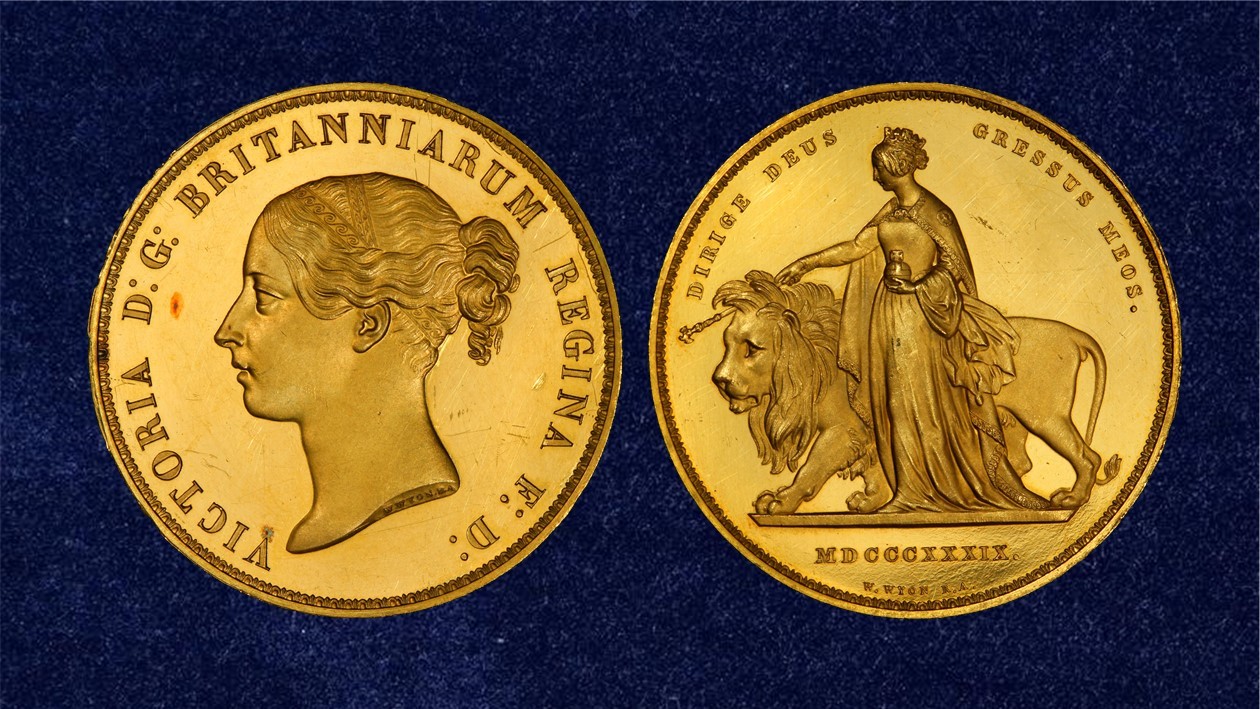
A gold 1839 Una and the Lion Five Pound coin in the collection of the National Museum of American History.
Spencer's Faerie Queene
The story of Una and the lion originates in Edmund Spencer's epic poem, The Faerie Queene. Published in the 1590s, the lengthy, allegorical work praised Queen Elizabeth I, celebrating and critiquing the Tudor dynasty. The poem features a large cast of characters, including warrior women, brave knights and savage beasts.
Una is a young princess whose parents are imprisoned by a ferocious dragon and embarks on a quest to free them. On her journey, Una encounters a fierce lion who is so captivated by her beauty and innocence that he becomes her companion and protector. In the symbolic world of the poem, Una represents truth and the Church of England.
The image of Una, guiding the lion, would become popular during the reign of Queen Victoria. Depicting the lion appealed to the great animal painters of the era, like Briton Rivière and George Stubbs. Meanwhile, other artists and designers saw new connotations in the story, drawing comparisons between the young Queen, leader of a mighty Empire, and Spencer's characters.
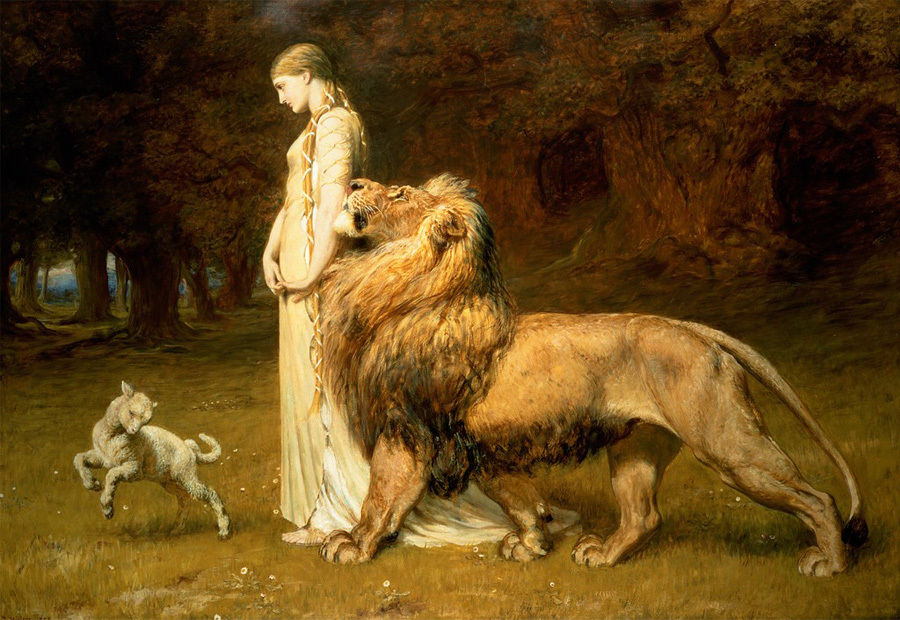
Una and the Lion, Briton Rivière, 1880. In this painting, Una's power over the lion is such that he does not attack the prancing lamb.
Symbols of Royal Power
William Wyon made the link between Una and Queen Victoria clear in his design for the reverse 1839 Five Pound coin. In Wyon's engraving, the figure of Una is crowned and bears an orb one hand and a sceptre in the other. Here she is not just a princess, she's a sovereign and titular head of the English church. This is reinforced by the Latin motto that circles the two figures: 'DIRIGE DEUS GRESSUS MEOS' which translates to 'May the Lord direct my steps.' Below this the year; 'MDCCCXXXIX' or 1839.
Una directs the lion onwards using her sceptre. The beast is 'passant' in heraldic terms, like on the arms of England, and recalling the crowned golden lion that appears in royal arms of the United Kingdom. By contrast to the lion's barely restrained energy, Una appears serene. The image of a powerful young woman, calmly guiding a symbolic representation of the nation, made for a timely and evocative pattern.
Wyon's choice to depict the Queen as a fictional character was potentially controversial move. It was the first time a sitting monarch had been featured on a coin in this way. The bold decision demonstrates that Wyon had the confidence and skill to apply broader artistic traditions to the medium of coinage.
Reinforcing Royal Favour
The obverse of the original Una and the Lion coin featured a portrait of the young Victoria, without crown or the veil of literary imagery. This effigy is known as the 'Young Head' and was also engraved by William Wyon. The same design would feature on the Queen's British and colonial coinage from 1838 until 1887 as Victoria remained fond of the portrait.
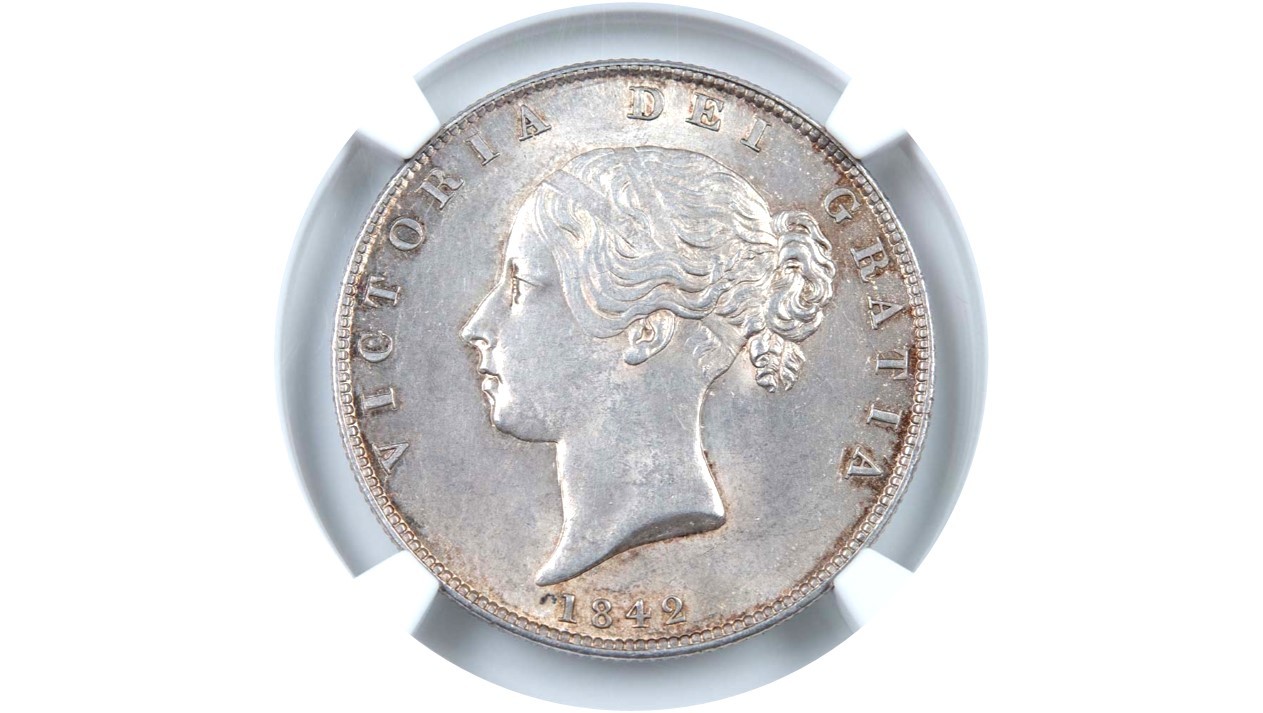
Wyon's Young Head as it appears on an 1842 Halfcrown graded MS 63.
Encircling the monarch's head is the Lain inscription 'VICTORIA D: G: BRITANNIARUM REGINA F: D:'. Unabbreviated, the motto would read 'VICTORIA DEI GRATIA BRITANNIARUM REGINA FIDEI DEFENSATRIX' or 'Victoria by the Grace of God, Queen of the British Territories, Defender of the Faith'. This legend was only used once on British coinage: on Una and the Lion. It's meaning supports and reiterates the interpretation of the coin's reverse as a statement of royal power over nations and the church.
When the Royal Mint reissued Wyon's coin in 2019 they replaced one Queen with another. Victoria's effigy was replaced with one of her great-great-granddaughter, Elizabeth II. The portrait of the current Queen is by Jody Clark. It's the fifth and latest portrait of the sitting monarch to feature on her coinage, first appearing in circulation in 2015. The legend differs from Victoria's: 'ELIZABETH II · D · G · REG · F · D ·,' followed by the value. Translated from the Latin it reads 'Elizabeth the Second, by the Grace of God, Queen, Defender of the Faith'.
A Collector's Favourite
Academics and coin dealers regard Wyon's Una and the Lion as 'beyond improvement' and 'one of the most beautiful coins to have ever been struck'. The medallic quality of the reverse image demonstrates Wyon's skills as an artist as well as his superior talent for executing dies. The striking design is considered the crowning achievement of Wyon's effort to elevate the art of coin engraving.
The original coin is favoured by collectors not only for its attractiveness but for its extreme rarity. The 1839 issue was probably intended only for numismatic collectors as only 300 to 500 examples were ever minted; a few hundred initially then only on demand. Within that number, several variations are present, adding to the collectability of the design. One key variation is the presence of an inscribed edge, reading 'DECUS ET TUTAMEN · ANNO REGNI TERTIO'. Translation: 'An Ornament and a Safeguard. Regnal Year Three.'
When these scarce examples come to the market they realise significant amounts. At a May 2020 auction a certified Una and the Lion Five Pound coin, graded by NGC as PF 65 Ultra Cameo, achieved a sale price of 86,500,000 Yen (about £620,700 or $810,000). The same coin had sold in 2017 for £340,000, meaning it more than doubled in value in just three years. It is clear that the original issue has become exceptionally desirable, perhaps because of the Royal Mint's 2019 Great Engravers reissue.
Remastering An Original
The last time William Wyon's original 1839 die was struck was in 1880. That die, still preserved, was digitally scanned to create a computerised, 3D impression of the original design in preparation for its inclusion in the Royal Mint's Great Engravers series, launched in November 2019. As the inaugural pattern reproduced for this seminal collection, the relief was remastered by current Chief Engraver Gordon Summers before it was approved for reproduction. This fusion of modern techniques and the timeless skills of the engraver makes for a remarkable coin.
The 2019 reissue came in six denominations:
- A single Five Kilo gold proof coin with a face value of £5,000
- A Two Kilo gold proof coin, face value: £2,000, issue limit: 4
- A One Kilo gold proof coin, face value: £1,000, issue limit: 12
- A Five Ounce gold proof coin, face value: £500, issue limit: 65
- A Two Ounce gold proof coin, face value: £200, issue limit: 225
- A Two Ounce silver proof coin, face value: £5, issue limit: 3,000
The 5kg coin, measuring 175 millimeters in diameter was - at the time - the largest coin ever issued by The Royal Mint. Creating the bigger coins involved enlargement of the original design and laser cutting to reproduce the pattern. They were then hand polished to produce a truly superior finish.
Only one of the 5 kilo coins was produced and was later sold to an unknown buyer. The rest of the gold proof coins were issued in extremely limited numbers and sold out within minutes of launch. The resale price then tripled overnight. Even the silver proof 2 ounce coin, issued in an edition of 3,000, were achieving £500 at auction in 2020.
Owning A Masterpiece
Frequently Asked Questions
The original 'Una and the Lion' was a Five Pound coin issued as part of Queen Victoria's coronation set in 1839. The reverse features a beautiful and unusual design, inspired by a story in Edmund Spenser's epic poem, 'The Faerie Queen'. The engraver, William Wyon, made the daring choice to represent Victoria as the fictional character, Una, guiding her protector the lion. The design is renowned for its beauty and its rarity. Only a few hundred were issued until the design was remastered as part of the Royal Mint's Great Engraver's series.
Academics and collectors love William Wyon's 'Una and the Lion,' regarding it as among the most beautiful coins in the world. The design reveals an engraver at the height of his talents, determined to show the world that coin design was an art form as capable of greatness as any other. Only 300 to 500 copies of the pattern were ever issued so its rarity makes the coin exceptionally desirable when examples come to the market. More investors will be able to enjoy 'Una and the Lion' now it has been reissued as part of the Royal Mint's Great Engravers series.
William Wyon was a prolific nineteenth-century engraver, well-loved for his finely-wrought, neoclassical designs. He was employed by the Royal Mint from 1816 as Second Engraver before becoming Chief Engraver in 1828. During his long career he executed dies for many notable coins, including the 'Young Head' effigy of Queen Victoria as well as the much sought after but very scarce 'Una and the Lion' five pound and the unused 'Three Graces' pattern.
The Royal Mint Great Engravers collection is a new special release, featuring the work of the Mint's greatest artists. Centuries old designs have been restored, remastered and reproduced for a limited reissue in various denominations. The first coin in the series, released in November 2019, featured Royal Mint Chief Engraver William Wyon's famed 'Una and the Lion'. This beautiful piece sold out immediately and quickly increased in value. Future additions to the series are eagerly anticipated.
A Great Engraver is a renowned artist who designed and engraved coinage for the Royal Mint. These creatives may have trained as sculptors or medallists but strived to develop the unique skills associated with coin design. They may have held the title 'Chief Engraver' or other prestigious Royal Mint appointments and were well known in their time for their work. Their work is celebrated in the Great Engravers series, launched in 2019.
The first coin in this landmark series was 'Una and the Lion', first struck in the 1830s. The Royal Mint decided to stick with authenticity and recreated the remarkable piece using the original die, produced by William Wyon. The die was remastered to remove any historical blemishes and the proof finish itself was adjusted so that the 2019 coin image would be an exact counterpart of the original 1839 masterpiece. It is likely further coins in the series will use similar technology.
'Una and the Lion', the first in the series, was issued in six denominations: a £5000 Gold Proof 5kg coin, a £2000 Gold Proof 2kg coin, a £1000 Gold Proof 1kg coin, a £500 Gold Proof 5oz coin, a £200 Gold Proof 2oz coin and a £5 Silver Proof 2oz coin. The higher value coins sold out within minutes of launch and the price tripled overnight. It is likely the same denominations will be released for future coins in the series. Demand is sure to be extremely high.
Only one coin in the Great Engravers collection has been released so far. This is a reproduction of William Wyon's 'Una and the Lion'. All denominations were released in limited quantities and the Royal Mint sold out very quickly. As they are rather rare, they demand a premium price on the open market. However, scarce coins can appreciate in price considerably over a period of time and can make very good investments. Check our product listings regularly for news of new releases and examples coming to the market.


